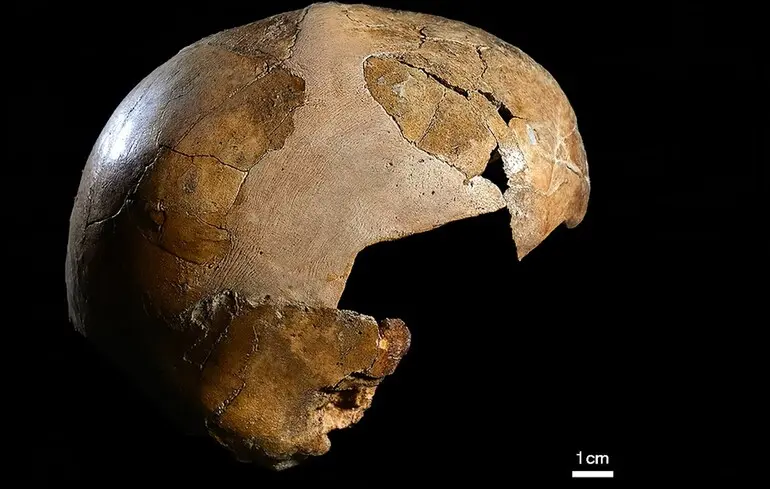Origins of Human Evolution: The Discovery of the Oldest Evidence of Interbreeding Between Homo sapiens and Neanderthals in Modern Israel

An international team of anthropologists has made a groundbreaking discovery that dramatically alters our understanding of humanity’s ancient history.
Researchers examined ancient remains found nearly ninety years ago in the Skhul Cave on Mount Carmel in Israel and concluded: based on an analysis of the skull of a young child about five years old, dating back over 140,000 years, this finding provides the earliest evidence of contact and interbreeding between Homo sapiens and Neanderthals.
This artifact demonstrates, for the first time, that biological and social interactions between the two human species existed in the territory of present-day Israel in ancient times.
Using modern technology such as micro-CT scans and 3D modeling, scientists created an exact digital replica of the skull, enabling them to conduct a thorough morphological analysis of internal structures, including the circulatory system and inner ear.
This evidence indicates that while the external shape of the skull resembles Homo sapiens, the internal features belong to Neanderthals.
Previously, genetic research showed that gene flow occurred between these populations between 60 and 40 thousand years ago, but current findings suggest that contact and interbreeding happened as far back as approximately 140,000 years ago.
This pushes the timeline of human-Neanderthal interactions significantly further into prehistory, supporting theories about the deep-rooted and complex interrelations among different human groups.
The study complements earlier discoveries of early Neanderthals that appeared in the region over 400,000 years ago and confirms that interactions between Homo sapiens and Neanderthals spanned thousands of years, with their genetic contributions merging into the fabric of human history.
This breakthrough opens new horizons for understanding human origins and the role of interactions among ancient populations in our evolutionary development.

